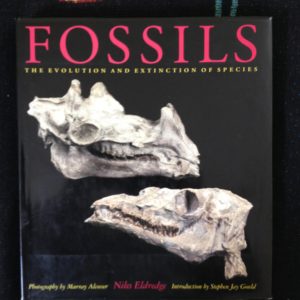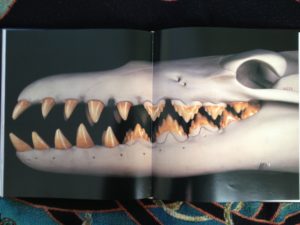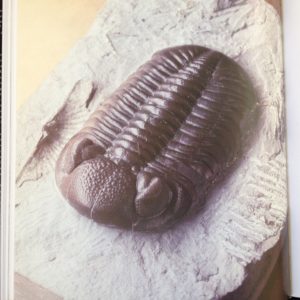

“Parochiality and narrowmindedness are, alas, as much a part of normal human response as generosity and expansiveness. People wall themselves within the comforts of their own profession and hurl derisive formulae at folk in other fields. Academicians brand athletes as dull lumps of brawn, succeeding only by lucky gifts of inherited muscle; athletes, in turn, dismiss academicians as effete and inept in all but their artificial world. In fact, excellence is both precious and similar in mental construction across all fields. True, both gifts of birth and a little luck never hurt, but the only common denominator is obsessive focus, mental discipline, hard work.”
So Stephen Jay Gould opens the elegant introduction to “Fossils”, by Niles Eldredge, photography by Murray Alcosser. Since science involves a close examination of nature, it helps if the nature attracts the eye. This is the most beautiful collection of photographed fossils that I have ever seen. Virtually every page is a stunner. But this is far more than a gorgeous coffee table book. It is also an exposition of the evolutionary theory of punctuated equilibrium.

Charles Darwin visualized evolutionary change as a stately, gradual process whereby variation of offspring would occasionally confer an advantage over other creatures. These new and improved creatures would be fruitful and multiply, edging out their neighbors. Variation is obvious. We see it in our children, otherwise they would be exactly like us. Most variation is of no advantage so the offspring will be no more likely to succeed than any other so you get the status quo. Useful variations will guide evolution. That’s how a fish eventually becomes a racehorse. Q.E.D.
Not quite. Evolution turns out to be as lazy as we are. Things don’t evolve unless they must. The humble horseshoe crab hasn’t seen the need to evolve much for three hundred million years. That’s a long time hanging out at the beach. They go back before the dinosaurs, and they are still here.

Bacteria on the other hand are evolving so fast that we may be in trouble. Why the difference? If the environment changes creatures must adapt or go extinct. We are driving the adaptation of bacteria by creating a hostile environment.

Stephen Jay Gould and Niles Eldredge pointed out that the fossil record shows periods of stability in whole ecosystems that can run for many millions of years, punctuated by periods of great change where many lines go extinct and others change quickly, say in one hundred thousand years. It is often the dominant species, comfortably settled in the center of their ecosystems that die out when change comes. They are so well adapted to one environment that when it changes abruptly, they can’t make it. It is the life forms living a hardscrabble existence on the edges of an ecosystem that are more nimble and can adapt faster that survive. The dinosaurs are a large example. They dominated the earth for several hundred million years and were mostly wiped out by a planetary cataclysm. A comet crashed into the Yucatan peninsula plunging the earth into darkness and freezing temperatures that would have lasted for years. Eighty percent of the species around perished. Mammals that up to then were no more impressive then rats filled the void. Were it not for that comet, the dinosaurs would most likely still be around and we never would have gotten our moment in the sun. Mammals are dominant – for now.

“Fossils” is one of those great works that both educates and delights. Trilobites almost jump out of the pages at you. Compliment it with “The Age of Wonder.”

The only thing it is missing is galaxies. My opening picture in this essay compares a shell to a spiral galaxy. That is not in the book. I included it here because the Golden Ratio that governs the curvature of shells also governs the curvature of spiral galaxies like the Milky Way. When nature finds a solution that serves, she uses it over and over again. Scale is not a limitation.
